Over the past few years, the use of web applications has increased to a vast extent. Developers have been looking for such a platform that is both advanced and provides flexibility to develop a variety of web applications. NodeJs Frameworks have earned the credit to be the top selection by the developers. You wanna know why? It is because of the capability to build smart, scalable server-side network-based applications.
Being an open-source platform, NodeJs Framework is also a cross-platform for JavaScript runtime. These characteristics are inspiring a lot of developers to choose this framework.
Best NodeJS Frameworks
Things that one should consider before choosing a NodeJs Web Framework are- Scalability and Flexibility. Gladly, every NodeJs Web Framework provides developers with a top-notch performance due to their excellent architecture. In this article, we will go through 20 Best NodeJs Frameworks, which will make your work smoother with JavaScript applications. Before going into the details, I would like to recommend having a birds-eye look at a list of the best Python web frameworks that also help you learn web application development. Now let’s get started with the list.
1. Express.Js
Express.Js is the primary selection of many developers. It is one of the best-known frameworks of Node.Js. Express.Js is known for its speed, flexibility, and minimalism. It is accompanied by an adjustable, fast, and dynamic set of features. It is suitable for developing both web and mobile applications.
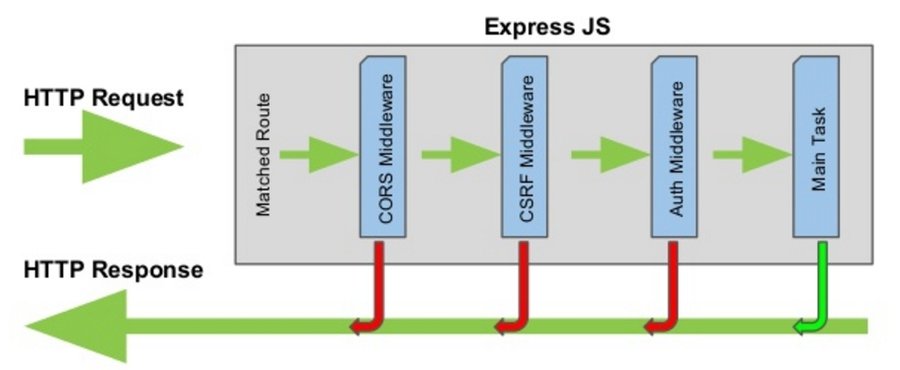
Features Offered By Express.Js
- Express.Js allows you to plot both single and multi-page, along with different web applications.
- This NodeJs framework comes with MVC (Model-View-Controller) – One of the seamless architectural patterns for creating eccentric applications.
- Allowing users to render large HTML pages dynamically, Express.Js also allows you to respond to HTTP requests by setting up middlewares (a.k.a, software glue).
- Express.Js is actually a routing table, i.e., a set of routing libraries. This set of libraries perform a variety of web actions based on HTTP methods.
- This framework also comes with a multiple-view support system. Users are impressed with the extremely fast I/O and its robust API making routine easier and faster.
- Creating quality applications quickly is the ultimate goal of Express.Js. Supporting 14+ template engines, easy HTTP methods, asynchronicity, it always focuses on performance.
2. Hapi.Js
Our next NodeJs framework is a commercial-centered server framework. Although Hapi.Js is an Open Source Framework for web applications, Hapi.Js is also a server framework. It is best used to develop REST (Representational State Transfer) APIs and other software applications. It is simply rich in configuration, stable, and reliable.
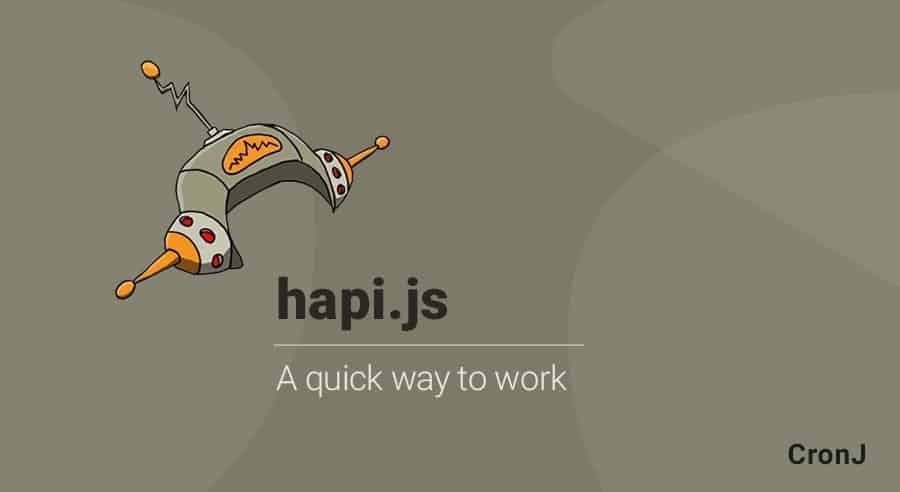
Features Offered By Hapi.Js
- Hapi.Js provides users with routing, I/O validation, and caching. This is what makes Hapi.Js compatible for REST APIs.
- Fixing bugs and adding new features with Hapi.Js is fast and smart. Hapi.Js provides a powerful plugin network that offers you to enjoy these features.
- One of the most flexible features of Hapi.Js is – users can use it with MySQL, MongoDB, and Postgres to create potential and static websites.
- To build HTTP proxy applications, Hapi.Js can help users by forwarding requests from its main API to other sources.
- Hapi.Js comes with a plugin – nes. It allows users to enjoy real-time chat applications and other social apps.
- Because Hapi.Js provides a JavaScript Templating Engine, rendering dynamic contents has been easier with Hapi.Js.
3. Socket.io
Socket.io is a full-stack framework. It is a JavaScript library that focuses on creating real-time applications. Socket.io also provides users with a simple and straightforward API that works in harmony with almost every service. Developers are impressed by the speed and reliability offered by this framework.
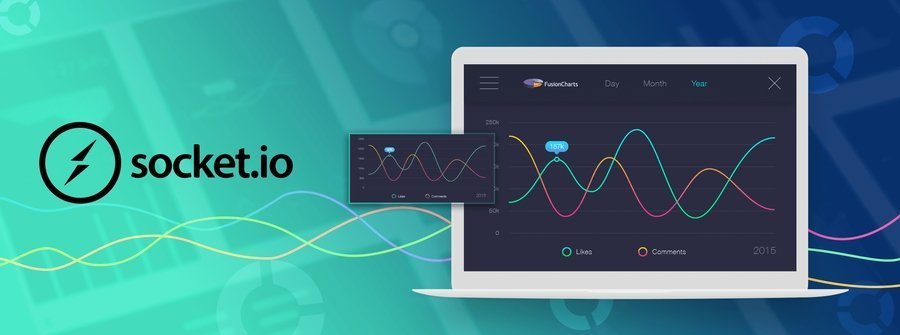
Features Offered By Socket.io
- Socket.io works on ultra-speed by providing similar APIs to both the web-client side section and server-side section.
- EventEmitters in Socket.io allows developers to establish bi-directional communication between the web client and the server.
- Socket.io played a significant role as a Node.Js, transferring the WebSockets into being more reliable and easy-to-access.
- Binary streaming is one of the essential features of Socket.io. Developers can easily feed readable streams to different browsers from the server.
- Socket.io is highly compatible and supports auto-correction, anomaly detection, rendering JSON serializable objects, multiplexing, etc.
4. NestJs
NestJs is a Node.Js framework that mainly focuses on developing progressive server-side applications by using cumulative JavaScript. NestJs uses TypeScript as it’s the only programming language. TypeScript is a special superset of JavaScript that offers special benefits over other frameworks.
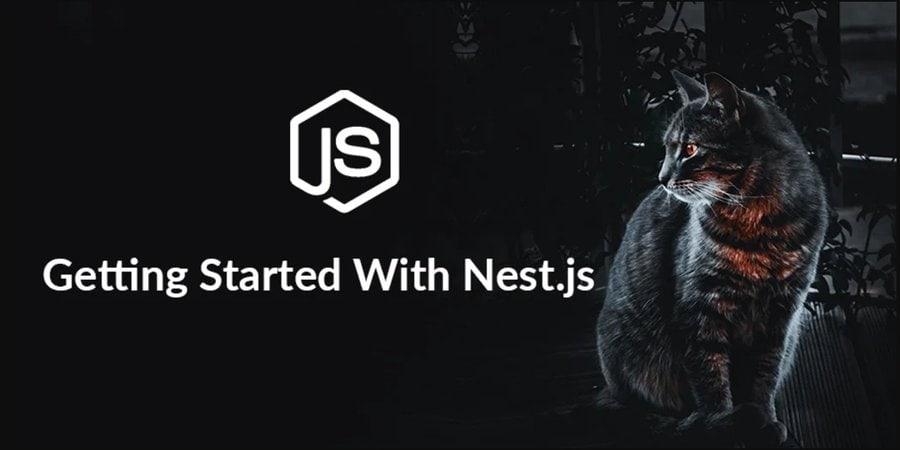
Features Offered By NestJs:
- Due to the use of TypeScript, NestJs offers better typing reliability. It also includes components of FP, OOP, and FRP.
- NestJs offers a modular structure, and it arranges codes systematically in different modules making the use of external libraries easier and common with this framework.
- Because Angular also uses TypeScript, you will find more comfort while building your backend with NestJs and AngularJs as your front-end framework.
- NestJs utilizes the features of Express.Js. Developers are offered the seamless benefits of building highly scalable, loosely linked, testable, and easily manageable applications.
- By using Nest CLI (a command-line interface) tool in NestJS, you can easily integrate a lot of unique features that are not always in the box.
5. Sails.Js
Sails.Js is a popular MVC micro-framework that offers many features similar to Express.Js. However, most developers believe that Sails.Js holds more potential. Compatibility offered by Sails.Js makes this framework an ideal candidate for many browser-based applications. Developing real-time chat applications, multiplayer games, and dashboards have never been this easier using Sails.Js.

Features Offered By Sails.Js
- Sails.Js offers users the use of almost any database. This is possible due to ORM (Object Rational Mapping) solution that comes with this framework.
- Sails.Js is highly compatible with several front-end platforms. Developers have enough freedom to their development process using this framework.
- What’s more is Sails.Js supports Socket.io by default making it one of the best selections for different social media applications, chat tools, and many others.
- Sails.Js offers flawless transitions as it has the same MVC structure as many other quality frameworks.
- Sails.Js handles HTTP requests by using Express.Js. Hence, it ensures the same quality and better performance.
6. Meteor.Js
One of the fundamentals of NodeJs Frameworks is Meteor.Js. Many say the list of NodeJs frameworks won’t be complete without Meteor.Js. Meteor.Js is a full-stack framework of Node.js that lets users build real-time applications. Meteor.Js is used to create both mobile and web-based JavaScript applications.
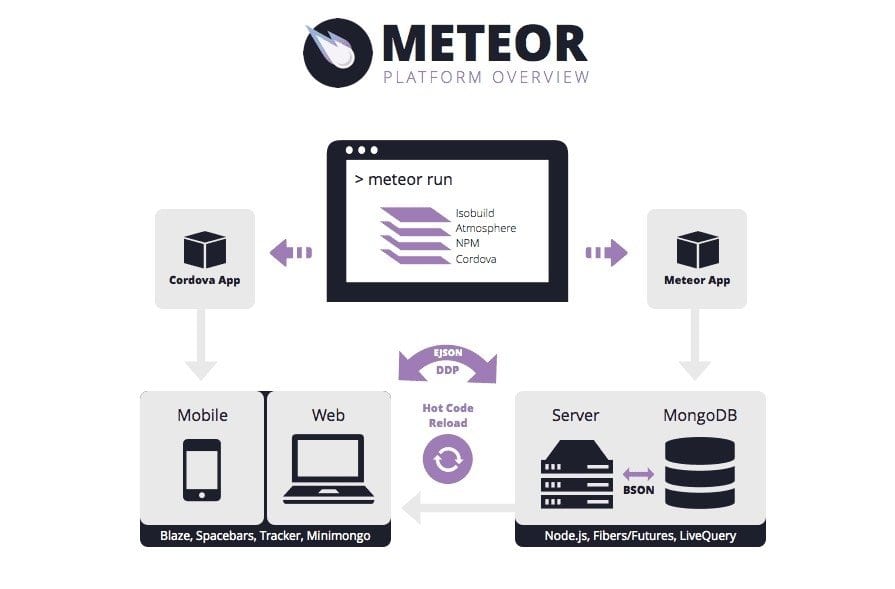
Features Offered By Meteor.Js
- Meteor.Js provides ideal performance due to sharing the same APIs on the server-side and client-side components.
- Meteor.Js is featured with a very lightweight architecture. It only comes with a few lines of code.
- With Meteor.Js, developers can use the same codes on several devices. Implementation of regular updates is easier with Meteor.Js due to this feature.
- Meteor.Js gives you the liberty to use any other platform at an instance. It can be easily integrated with react, angular, vue, mongo, Cordova, npm, and graphql.
- Many pre-written modules come with Meteor.Js. Developers can take a large number of benefits from these modules. Also, the Meteor.Js community is always there with useful tutorials, packages, documentation in need.
7. Koa.Js
Koa is a lightweight yet extremely powerful middleware framework. It is a small, robust web framework and is developed by the same team that has been working with Express.Js. Koa can be used to develop potential web-based applications and APIs. In fact, It improves the quality of web applications and error management.
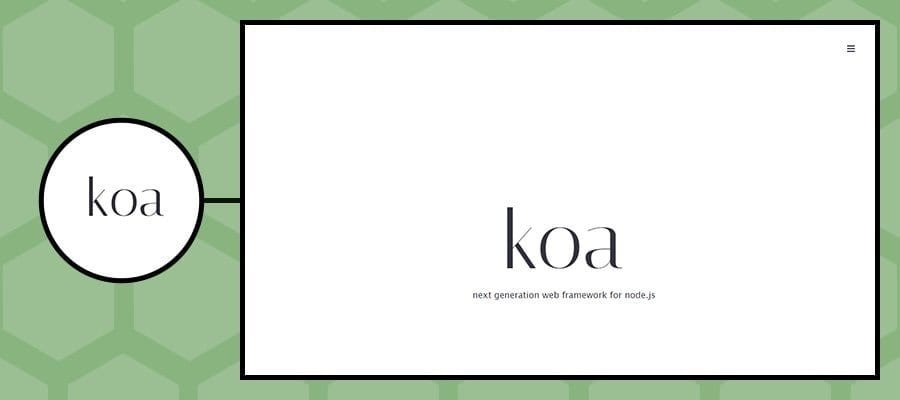
Features Offered By Koa.Js
- Koa.Js comes with more options for customization. It allows you to work with applications from scratch where developers can add features that they need only.
- Koa.Js allows the use of generators that limit callbacks, which in-turn offers developers a better error handling system.
- It doesn’t pack any bundle of middleware in the core. That makes server writing with Koa faster and more enjoyable.
- Some useful strategies for general tasks such as freshness of cache, content negotiation, proxy-support come by default with Koa.Js.
- Koa.Js supports syn/await keywords and helps to manage your codes neatly. Koa can always clean up any mess caused in your code due to any callback.
8. LoopBack
LoopBack is known for being a highly-extensible API framework. Modern applications often come with complex integration. The good news is that LoopBack is an ideal open-source framework that allows you to create dynamic REST APIs with a minimum or even no knowledge of coding. It’s simple, easy, and everything one can dream of.
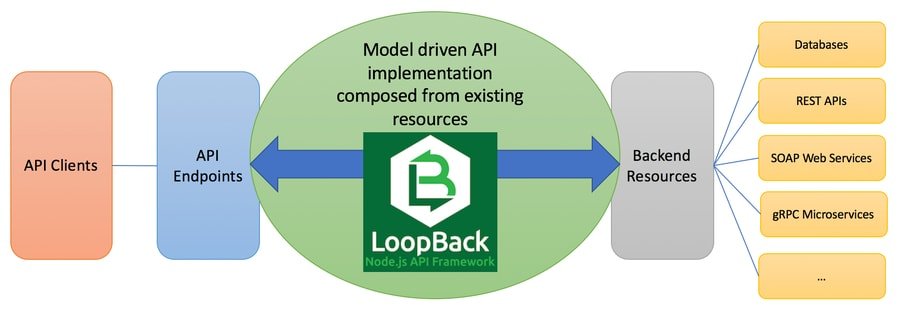
Features Offered By LoopBack
- Allows you to create such APIs that can work with any kind of web client and can be easily bridged to backend data sources.
- Supporting multiple databases is one of the most common features of NodeJs Frameworks. LoopBack can also connect with several databases such as Oracle, SQL, and MongoDB.
- Permits developers to create SDKs and API Documentations. This is possible due to the widget – API Explorer that comes in default with LoopBack.
- Because LoopBack provides a full-stack configuration, developers can easily inquire about their database from the client-side using direct filters.
- Provides a clean and modular structure of codes. Once you start to use it, you would know where and how to place new codes.
- Comes with model-relation-support, third-party login and storage service, API swagger, better user management policy.
9. Derby.Js
Derby.Js is an open-source framework. Based on MVC structure, it is also a full-stack NodeJs Web Framework. Derby.Js is considered ideal for developing real-time collective applications. You can build both quality web and mobile applications with Derby.Js. Features such as data syn., real-time concurrency, developing multi-websites are possible with this framework.

Features Offered By Derby.Js
- Derby.Js integrates a quick time Derby Racer – A data synchronization engine allowing synchronization of data-time between browsers, servers, and application databases seamlessly.
- Quick self-regulating timing and real-time concurrency offered by Derby.Js allow users to enjoy the benefits of multi-users in the same applications with a variety of editing options.
- Derby.Js ensures bi-directional script development. It lets users work with both client-side and server-side script components.
- Using Derby.Js, developers can easily add customized codes and build real-time and effective custom-made websites.
- Derby.Js automatically resolves the conflict that is directed by ShareDB. ShareDB implements the use of OT technology (Operational Transformation) and naturally resolves conflicts online/offline.
10. Mean.io
Mean.io is a JavaScript Framework. It is a full-stack MVC framework that allows developers to build the fastest, powerful, and easily manageable applications. The word Mean actually consists of Mongo, Angular 6, Express, and Node. Mean is a collection of open source technologies. It is ideal for developing real-time dynamic applications.
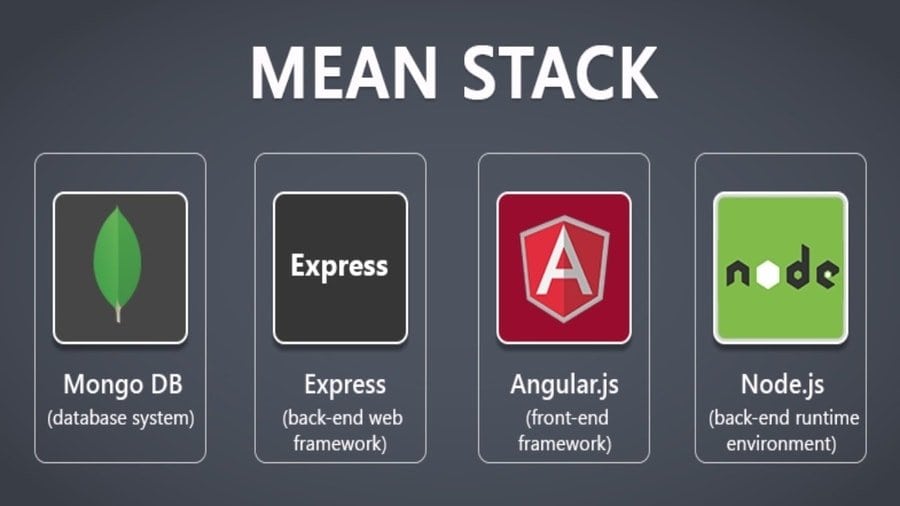
Features Offered By Mean.io
- Besides having a full Mean Stack, Mean.io also supports a number of other development tools – Babel, GraphQL, etc.
- Mean.io is a full development stack. Developers won’t have to worry about additional components. Every component of this framework is programmed to be utilized together.
- Developers enjoy working with Mean as it requires only JavaScript. In fact, developers won’t be needing any standalone server if they are proficient enough in JavaScript.
- Enjoy the benefits of Cloud Compatibility with Mean.io by implementing the functionalities of MongoDB.
- Mean.io offers developers rapid and real-time changes to applications even if they are in development stages, allowing developers to present demo versions of their applications to the clients easily.
11. Total.Js
Total.Js is a fully-featured yet open-source Node.Js framework. It is an array supportive framework that provides a fast, robust, and stable service. One of the main benefits developers enjoys while using Total.Js is the ultimate flexibility offered by this framework. It is appropriate for building IoT applications along with other web and desktop-based applications.
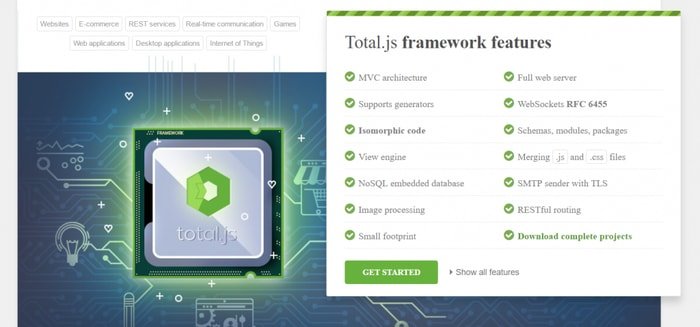
Features Offered By Total.Js
- Total.Js is highly compatible with multiple database systems – MySQL, MongoDB, PostgreSQL, and several front-end systems- Angular, Ember, React.
- Total.Js offers a modular architecture. It includes some of the exclusive features such as image processing tools, simple mail transfer protocol (SMTP) system, and others.
- Creating real-time responsive applications has never been easier before. With Total.Js, now you can build cost-effective, fully responsive applications.
- Total.Js Eshop is one of the most engaging versions of Total.Js. It is really useful for developers who are looking for an effective content management system (CMS).
- Total.Js doesn’t need any help from the grunt module to compress, making this framework simple and easy to put on work.
- The fact that the NoSQL database is embedded on Total.Js makes it even more suitable and efficient on development projects.
12. AdonisJs
Adonis is a popular NodeJs MVC framework. It is highly recommended for writing scalable server-side web applications. According to the official documentation of AdonisJs, it is declared that AdonisJs runs on all major OS. You can easily write different web applications with Adonis with a few lines of code. It is simple, easy to use, and offers developers a secure development platform.
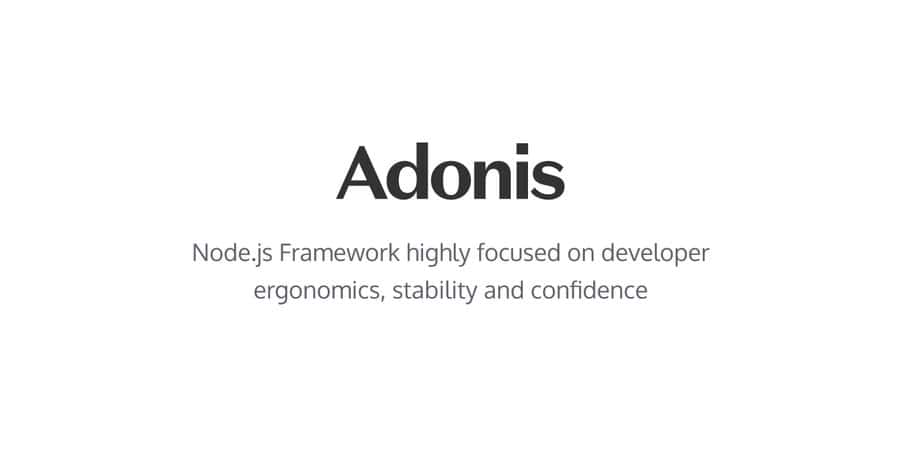
Features Offered By AdonisJs
- AdonisJs framework offers a consistent ecosystem where developers can focus more on professional needs and avoid wasting time choosing between different packages.
- This NodeJs Web framework supports ORM Technique, allowing developers to explore and handle data easily from databases such as SQLite and Postgres.
- While facing problems with Adonis, developers can quickly work on the existing applications of this framework as it holds a set of standardized conventions.
- For beginners, AdonisJs is easy to learn. Having a standard understanding of NodeJs Framework, JavaScript, and Async programming is enough, to begin with, Adonis.
- MVC structure of Adonis is quite similar to Laravel. Developers who are already familiar with Laravel can smoothly go on with AdonisJs.
13. Mojito
Let’s be honest; you can not drink this mojito. Mojito is an MVC framework. Based on Yahoo! Cocktail (A mobile development platform), it is written in JavaScript. In fact, Mojito is built by the developers of Yahoo, and it focuses on developing both web and mobile applications. It offers a bundle of features that are of real use to the developers.
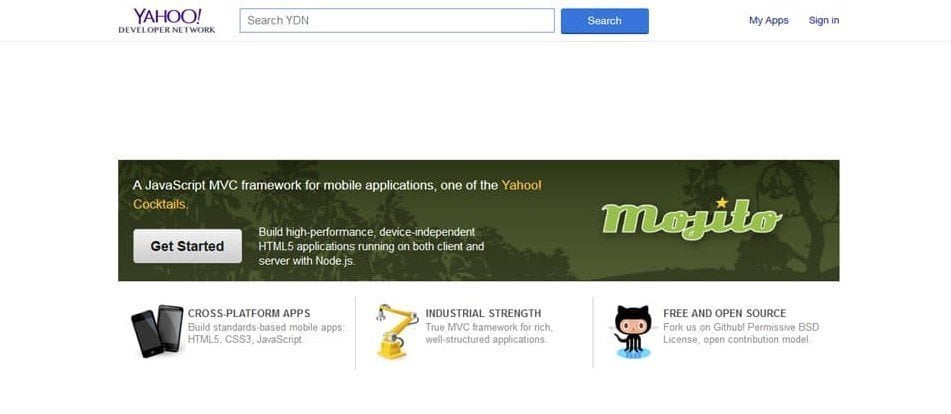
Features Offered By Mojito
- Since Mojito is written in JavaScript, it can run smoothly both on server-side components as well as client-side components.
- Mojito comes with built-in support for unit testing that allows developers to work with accuracy while working with this framework.
- Mojito offers the agile development of web applications. This enables developers continuous improvement during different development stages of applications.
- Useful actions such as internationalization, syntax, and coding convention checks are offered here in Mojito.
- Mojito comes with a custom service block. Developers can easily create reusable service blocks and link them to the core.
14. Keystone.Js
Keystone.Js is a full-stack and open-source framework. Developed in Express.Js and MongoDB, this powerful framework is used for developing database-driven applications, websites, and APIs. For years, Developers have been relying on this framework as a trusted companion due to its flexible, lightweight, and extensible characteristics.
Features Offered By Keystone.Js
- This NodeJs Web framework offers a great Admin UI which users can easily manage. Moreover, any types of customization are welcome here.
- Keystone supports dynamic routes, blocks for creating a database, and form processing. It is easier than ever to develop dynamic websites/applications/APIs with this framework.
- This framework offers integration with several online platforms such as Cloudinary, Mandrill, Embedly, and Google Places to handle data easily.
- Regardless of the operating systems (Windows, Mac, Linux, BSD Solaris), Keystone provides stable management to the overall progress in the development process.
- Keystone also supports other additional frameworks and apps such as JSP/ ASP.NET/ Silverlight applications, WPF, CXF, WCF, and others.
15. Feathers.Js
Feathers.Js is a fast, micro-service, real-time REST API framework. Developed on Express.Js, this framework offers users to develop modern isomorphic applications. In fact, developers can easily create any web applications and write down any kind of REST APIs from scratch due to the flexible and compatible architecture this framework supports.
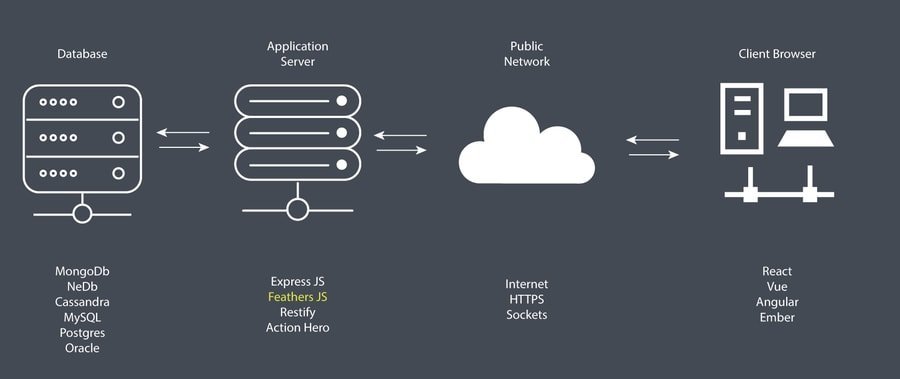
Features Offered By Feathers.Js
- Feathers.Js is a minimalistic web framework. Developers can easily take advantage of the modern features of JavaScript because Feathers.Js supports ECMAScript6.
- Feathers.js completes different functionalities of an application by combining different hooks and services. As hooks run both on client-side and server-side components, developers can easily share common functionalities between both parties.
- This NodeJs Web framework makes communication between applications and other third-party services easier because it supports REST APIs automatically and instantaneously.
- Service adapters offered by Feathers.Js are unique and versatile. It offers developers both relational and non-relational databases, examining them through one interface.
- Feathers.Js offers integration of optional plugins for successful authentication and authorization of email/ OAuth/ Token and other confidential information.
16. Strapi.io
Strapi.io is an open-source, hugely featured MVC NodeJs Web framework. It entirely focuses on providing fast, systematic, and well-planned web/mobile applications and websites. Developers are impressed with its headless CMS benefits that lead to creating powerful APIs with less work. It is a plugin-oriented, secure, and highly customizable framework.
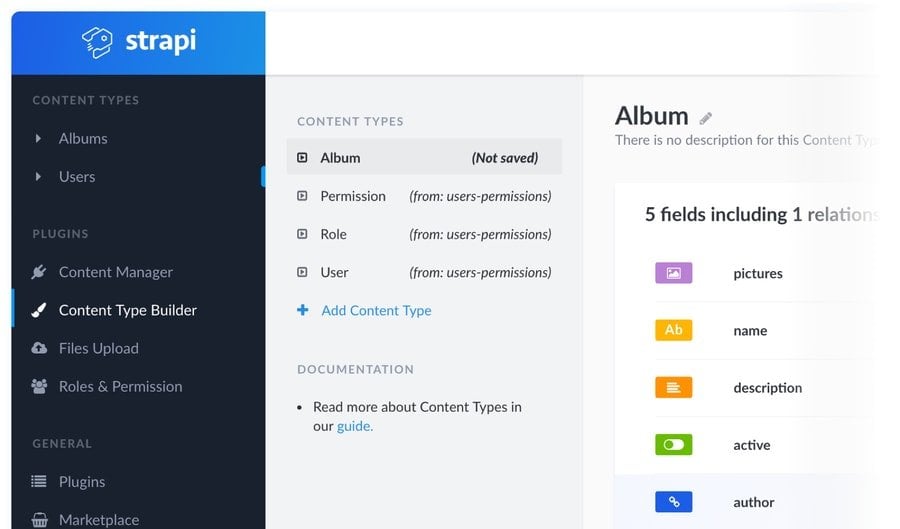
Features Offered By Strapi.io
- Strapi.io offers an entirely extensible administration panel that offers an easy-to-go and durable content management.
- Every project with Strapi.io is associated with useful built-in features such as API Generator, Authentication and authorization management, CMS, and others.
- Strapi.io offers an intuitive interface that is comprehensive to both the experienced and beginners. Beginners can efficiently work on its flexible admin panel with full confidence.
- Apart from being highly extensible, this node.js framework is also very customizable. Developers can develop their own plugins or enjoy the benefits of the existing ones.
- You can use this headless CMS framework as a microservice, which offers endless possibilities to stitch applications together with the help of different APIs.
- Strapi.io allows you to distribute your content to multiple channels using headless CMS. In a world of modernization, it offers a complete experience to your users.
17. Restify.Js
Restify is a well-known REST API framework of Node.Js. Developers are satisfied with its potential solution for REST APIs for years. The overall performance of this framework is modified mostly for developing semantically correct RESTful APIs. It is also used in many other Node.Js developments.
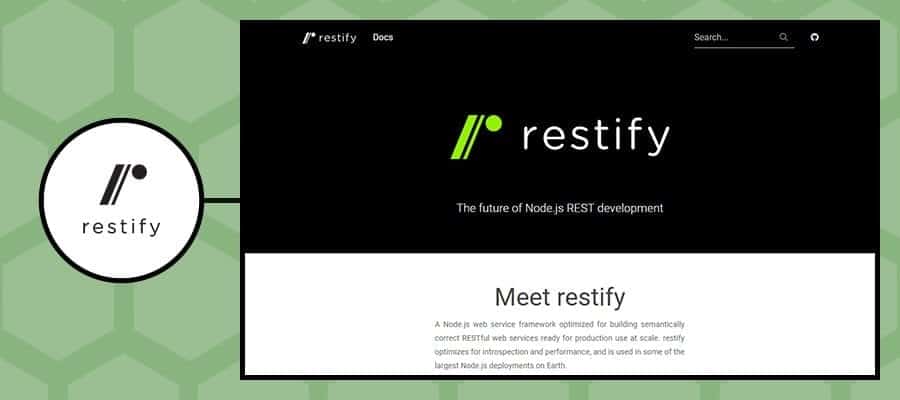
Features Offered By Restify.Js
- Restify is one of the earlier frameworks of Node.Js. It is exclusively developed for building scalable APIs.
- Restify works in direct harmony with HTTP actions, cycle requests, and the response. This helpful nature helps developers to monitor and examine entire API frameworks.
- If you are working on a platform that is DTrace supportive, Restify will be of real use to you. Restify offers automatic support for DTrace.
- Restify maintains real-time data via Socket.io. It offers bi-directional communication to both web and client-side components. It also helps you broadcast and store data (Whether it be binary data or any object).
- Restify lets you handle errors immediately and systematically. It offers multiple error trapping functions that hook the errors that take place.
18. ActionHero.Js
Developers who prefer using lightweight and rich-featured frameworks ActionHero might be the right one for them. ActionHero is a light and fast Node.Js framework best used for building reusable and progressive API services. Moreover, it offers many special features and is highly flexible to different types of clients.
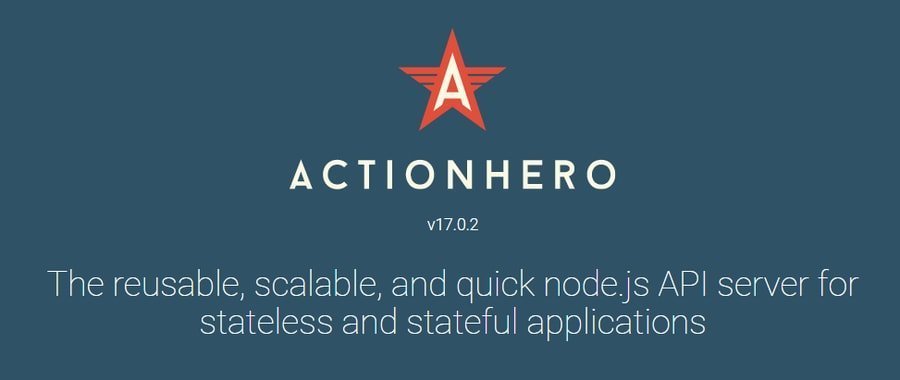
Features Offered By ActionHero.Js
- ActionHero is highly compatible with web clients, socket clients, and web socket clients such as HTTP, HTTPS, TLS, TCP.
- Resque, a Redis-backed library, powers the service system of ActionHero. It offers developers to build background tasks, place them on several queues, and work with them later.
- ActionHero offers a top-class cache system, decentralization of communication, and distribution of workers. You can distribute data from one entity to several servers.
- Games and applications that state both HTTP and Socket, ActionHero are there to help. ActionHero runs identical APIs across several protocols.
- ActionHero operates based on the microframework category, which makes this framework an ideal candidate for IoT applications.
19. Sequelize
Sequelize is a generator framework. It is a promise-based ORM (Object Relational Mapping) technique for Node.Js that supports a lot of exciting features such as validation, association, synchronization, and others. It is effortless to learn for beginners and gives robust transactional service to its users.
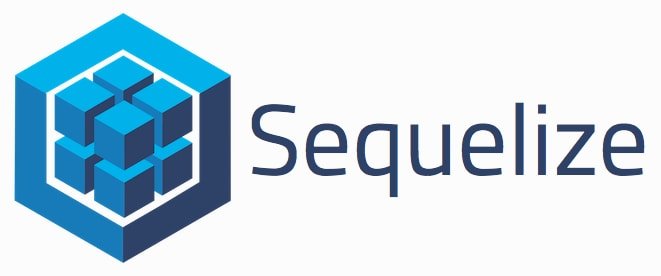
Features Offered By Sequelize
- Sequelize supports several databases such as MySQL, SQLite, PostgreSQL, MariaDB, and MSSQL. This offers huge flexibility to the professionals.
- Many of the query-based models of Sequelize share common similarities with MongoDB – especially the CRUD operations.
- With Sequelize, you can customize the error messages. This is possible due to the implementation of a middleware that allows this function.
- Because Sequelize supports several databases, it also eliminates the differences between different SQL execution.
- Sequelize can automatically synchronize the database if, in any case, you change platforms. This nature of Sequelize makes it more adaptive and useful to the developers.
20. Moleculer
Two words: Speed and Power, define our next and last Node.Js framework of this article. Moleculer is an extremely fast open-source microservice framework. It supports middleware and can provide several services on a single server. Developers enjoy the benefits of high performance and other exciting features of this framework.
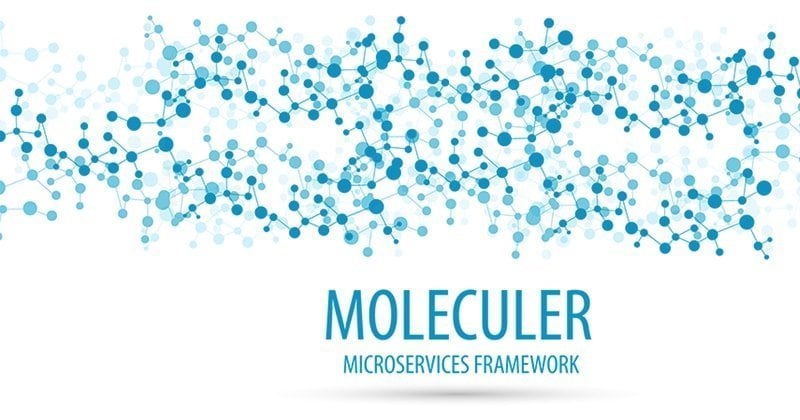
Features Offered By Moleculer
- Because Moleculer is a microservice framework, it is very time efficient and takes less time to write, re-write, or improve applications.
- Moleculer allows deploying small changes in one part of the application without affecting other areas of the application that hasn’t been reviewed yet.
- Being a fault-tolerant framework, Moleculer has a built-in load balancer, CB, retries, bulkhead, and timeout features.
- Moleculer, being a highly extensible Node.Js framework, provides a variety of built-in customizable modules, including – caching, transporter, serializer.
- Due to the blessings of micro-service, moleculer allows you to build applications for several platforms, whether web/mobile/IoT apps.
Our Recommendation
NodeJs frameworks are highly flexible, extensible, and reliable. The Js framework that is suitable for your application depends entirely on the nature of your project and what it offers you as per your requirement. As for beginners, we suggest they should go with such a NodeJs framework that gives them both reliability and simplicity, such as NodeJs, Koa, Sails.Js.
Finally, Insights
NodeJs frameworks have been playing a vital role in the progress of modern applications. Developers all over the world are aware of the importance and efficiency of the Node.Js framework. Well, we tried our best to come up with a list of the Best Node.Js frameworks in this article. If you have anything more to suggest that is valuable to this article, please leave a comment.
Share this article to let others know about the Top 20 Best Node.Js Frameworks and stick with our blog for more exciting and useful content.
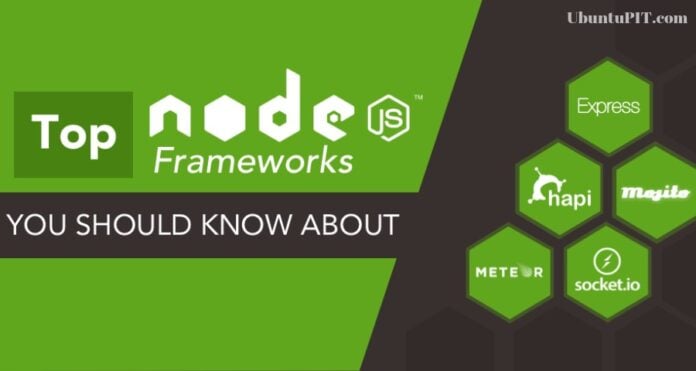
Fastify, it is an option
Having used PHP + Laravel for backend in a real serious project, I think it’s time to look on other options for backend tools.
There are Java + Spring Boot, C# + ASP.net, Python Django which are all interesting. However, learning them took much longer time than javascript based backend software. So Node.js is a more reasonable option when time and effort constraints are things to consider.
For me, choosing Node.js framework is not as easy as choosing front-end framework/library. For Node.js framework, there are more options which seem to offer their own advantages over the other, like in your list.
Currently I am learning Express, Hapi, Fastify and Feathers. I think I should learn these traditional frameworks first before I can proceed to modern frameworks such as NestJs or Total.js.
Ideally I want to learn those traditional frameworks in parallel. In reality, though, it is not easy, because I am still occupied with serious project written in PHP + Laravel. So maybe I should better focus on one framework if I want to gain sufficient skills on them. But, actually, I am still in the phase of comparing those frameworks while learning them so that I will be able to make decision on which one I will use in my next project.